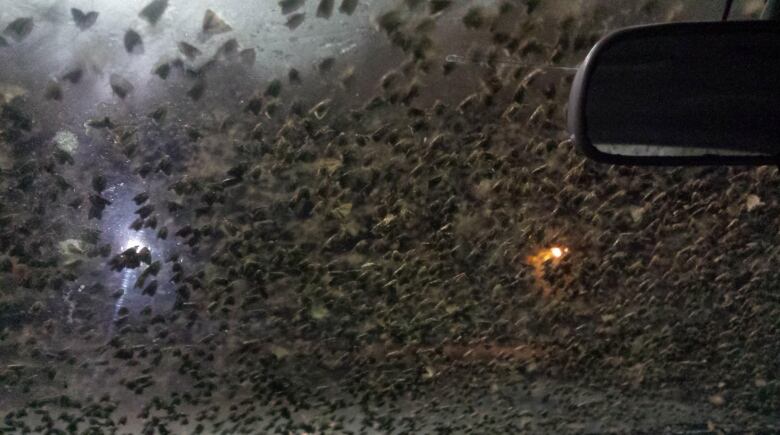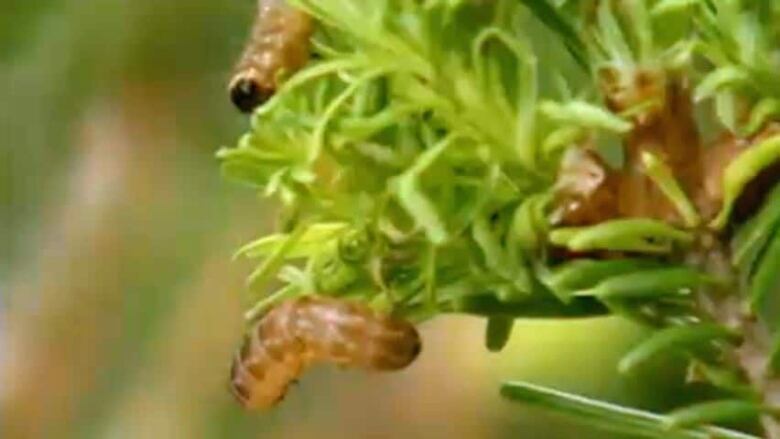Scientist 'shocked' by results of strategy to halt spruce budworm infestation
Successful early intervention strategy extended in New Brunswick for another 4 years

A fresh approach to controlling the infestation of spruce budworm in New Brunswick forests has surpassed expectations and minimized the effect of the devastating insect, according to the project's lead scientist.
An early intervention strategy focused on proactive detection and targeted spraying was adopted in 2014, as officials feared a growing infestation in Quebec would cross the border.
Dr. David MacLean, emeritus professor of forest ecology at the University of New Brunswick, and the project lead, said the results are "extremely promising."
The spruce budworm population across New Brunswick fell by more than 90 per cent in 2018. That year, 220,000 hectares were treated with biological insecticide. In 2019, only 10,000 will be treated, MacLean said.
"We were shocked, to be honest, and we still don't know completely why it happened," he said.

With an analysis still ongoing, MacLean speculated the reason for the massive drop in numbers is a mix of spraying, climatic influences and natural enemies.
The strategy
The spruce budworm "is one of the most damaging native insects affecting spruces and true fir in Canada," according to Natural Resources Canada. An outbreak could last several years and ravage millions of hectares.
In 2012, scientists warned an infestation could cost the provincial forest industry more than $1 billion because the larvae eat the type of trees that make up more than half the province's woodlands.
New Brunswickers got an up-close look at how dense a spruce budworm infestation could get in 2016, when a swarm blanketed parts of Restigouche County.

Before the early intervention strategy was adopted, MacLean said the standard practice was to spray infested trees after about two years of defoliation. It takes about four years of defoliation to kill the tree, he said.
The idea was to try and keep valuable trees alive, but the new approach is meant to spot small populations on the rise and eliminate them with biological insecticides Btk and tebufenozide that aren't harmful to mammals, birds or aquatic life, according to the project's website.
The Quebec situation
The situation in New Brunswick is a stark contrast to what's happening in Quebec. During aerial surveys, researchers can pinpoint exactly where the border is because of heavy defoliation on the Quebec side.
MacLean said the Quebec outbreak began north of the St. Lawrence River more than a decade ago and spread south into the Gasp Peninsula. He said 8.2 million hectares of forest that's bigger than New Brunswick are infected.
More than a quarter of the affected forest land is in the Gasp, which hugs parts of northern New Brunswick.
"There's over two and a half million hectares of detectable defoliation from flying aircraft over and looking at aerial surveys in Quebec," MacLean said.
"There's almost none in New Brunswick."

About 500 hectares of defoliation were detected in the province last year, he said.
MacLean stopped short of declaring victory, however.
"There may well be a rebound," he said. "There have been blips where things have gone down and then they've come back."
The intervention strategy, initially slated to run from 2014 to 2018, received $18 million from federal and provincial government, industry and Natural Resources Canada. The strategy has been extended until 2022 and will receive another $75 million.
With files from Harry Forestell












_(720p).jpg)


 OFFICIAL HD MUSIC VIDEO.jpg)
.jpg)



























































































